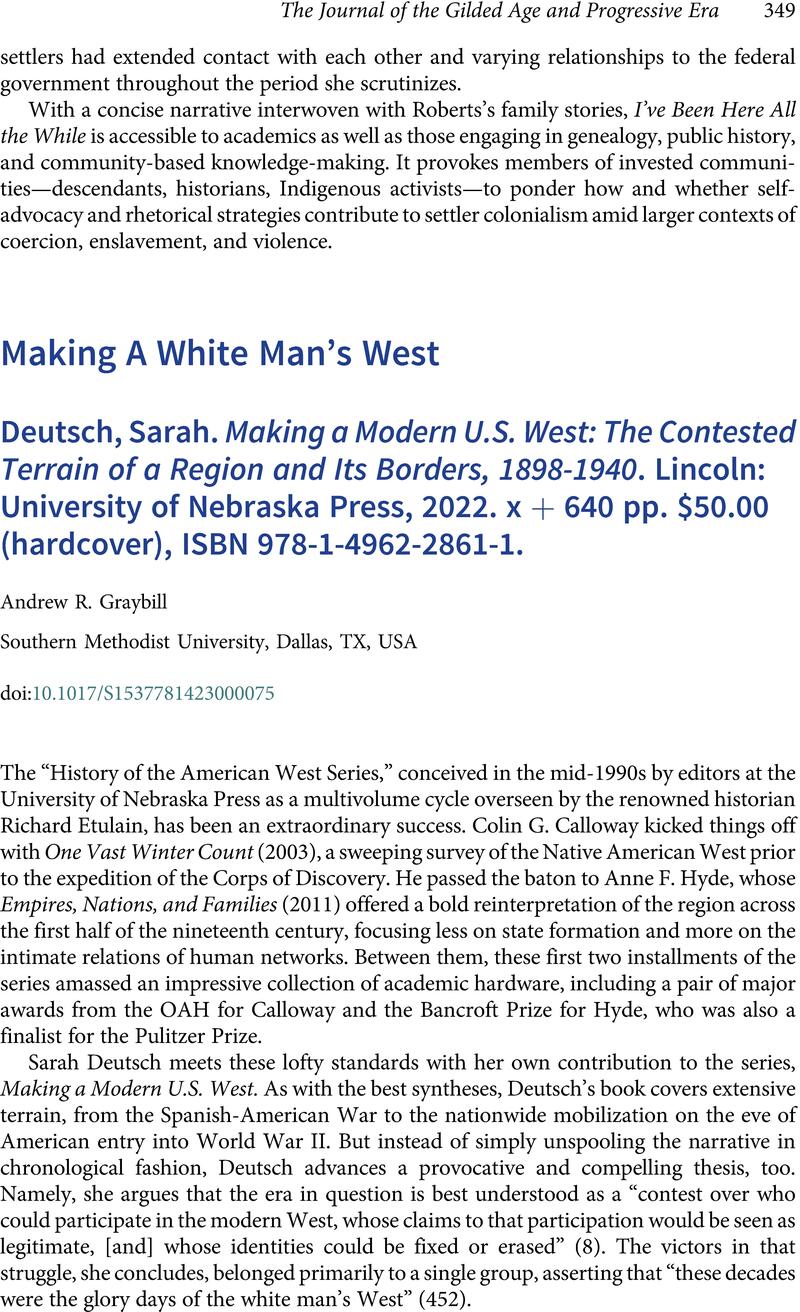No CrossRef data available.
Article contents
Making A White Man’s West - Sarah Deutsch. Making a Modern U.S. West: The Contested Terrain of a Region and Its Borders, 1898-1940. Lincoln: University of Nebraska Press, 2022. x + 640 pp. $50.00 (hardcover), ISBN 978-1-4962-2861-1.
Review products
Published online by Cambridge University Press: 30 June 2023
Abstract

- Type
- Book Reviews
- Information
- Copyright
- © The Author(s), 2023. Published by Cambridge University Press on behalf of the Society for Historians of the Gilded Age and Progressive Era (SHGAPE)


